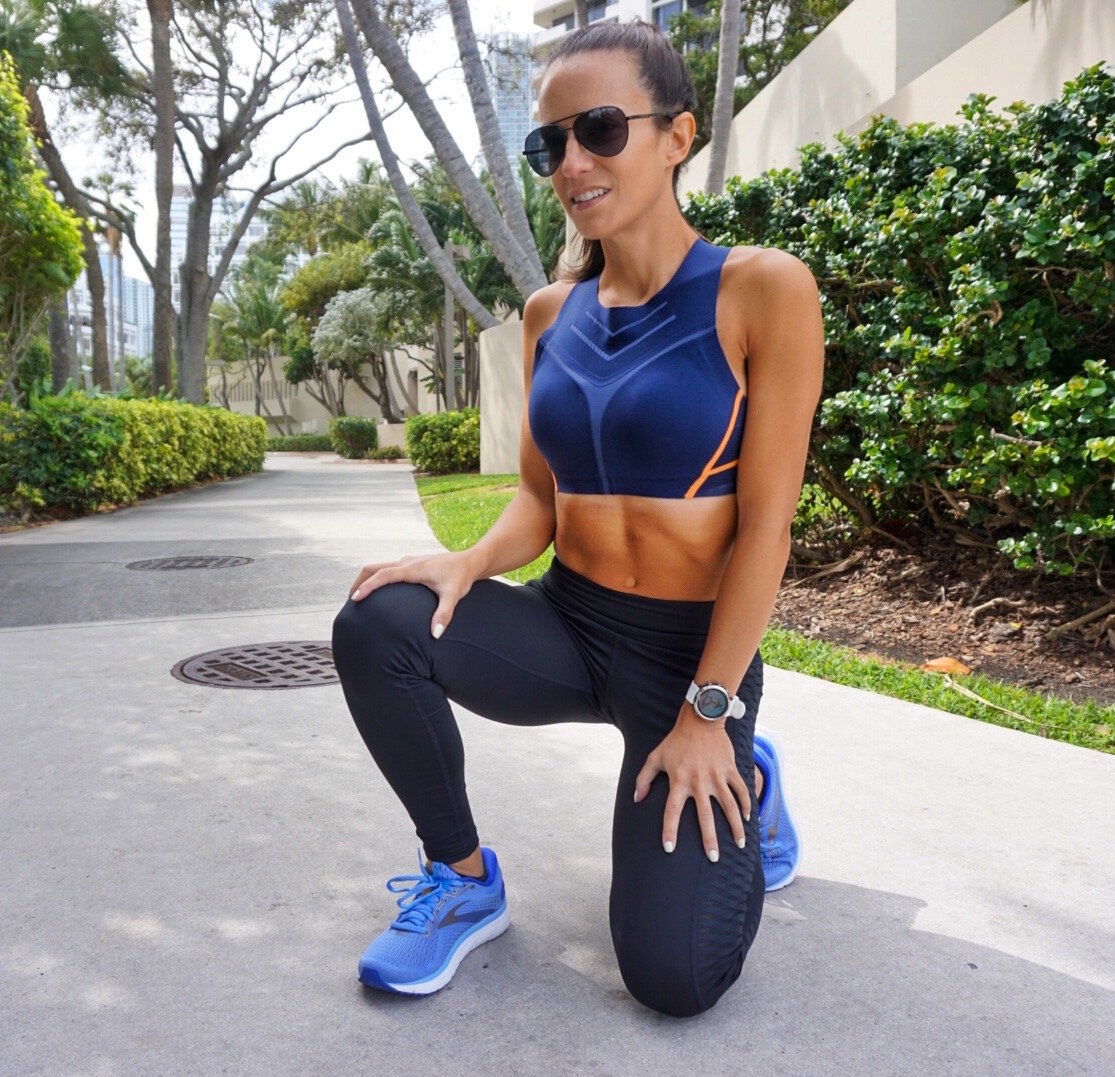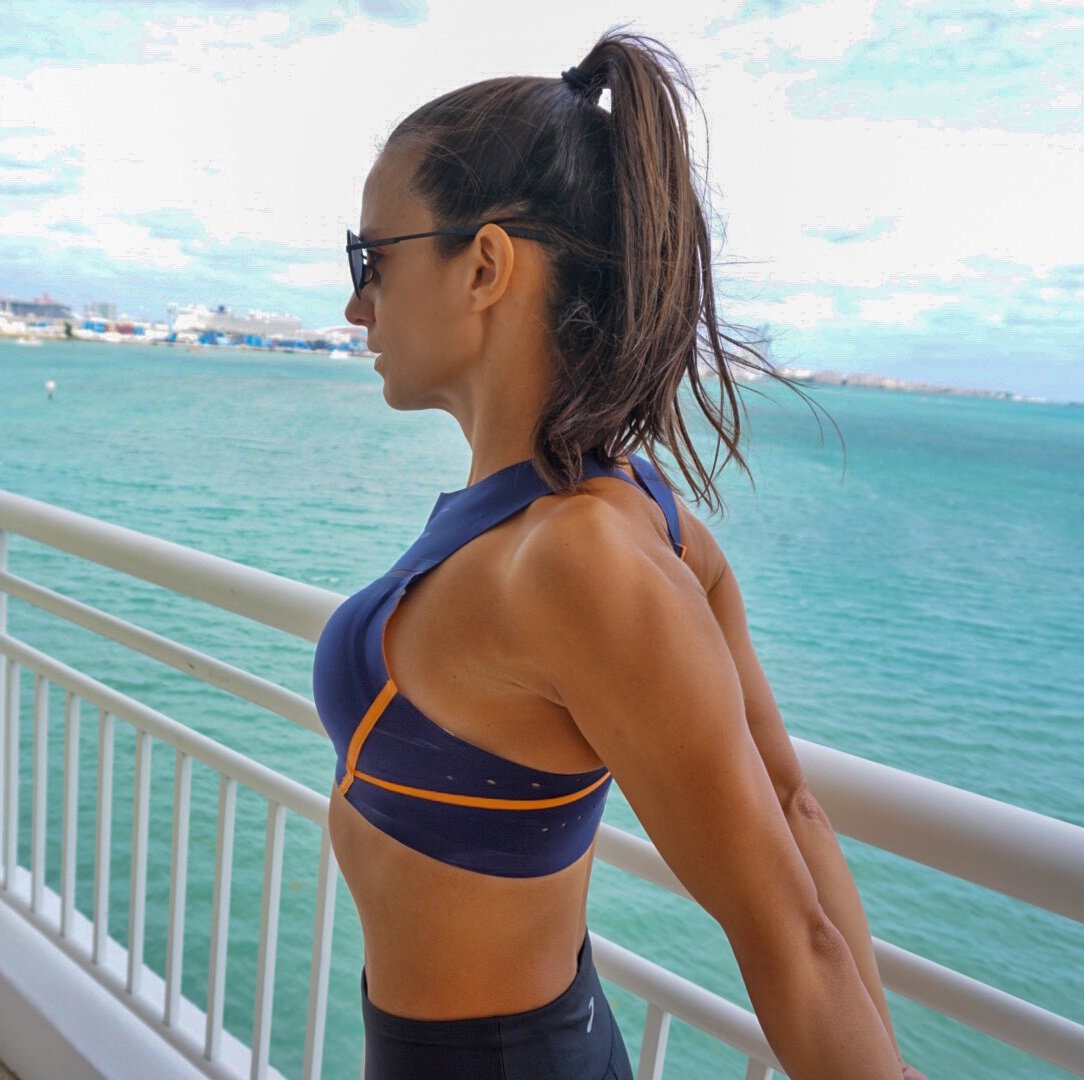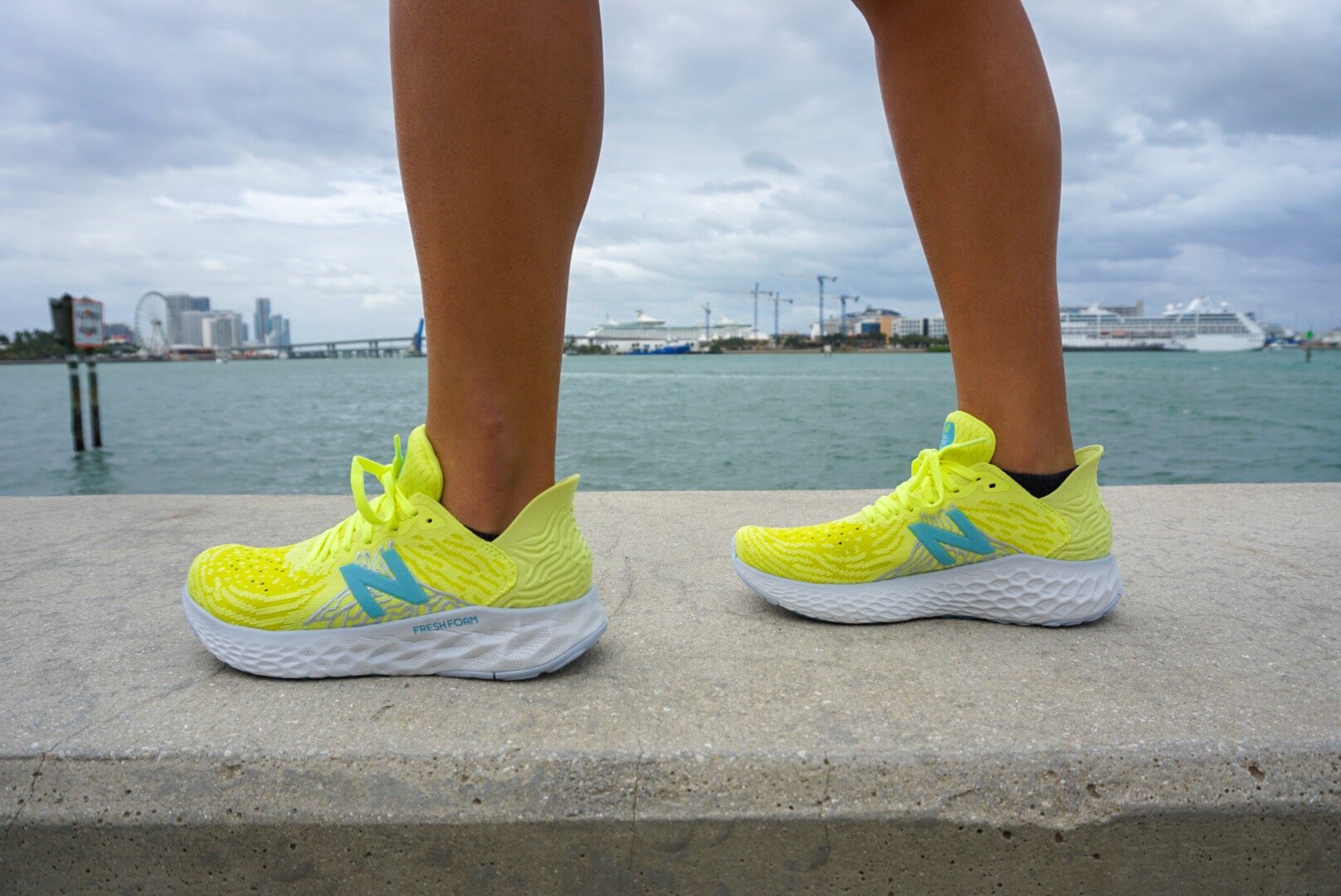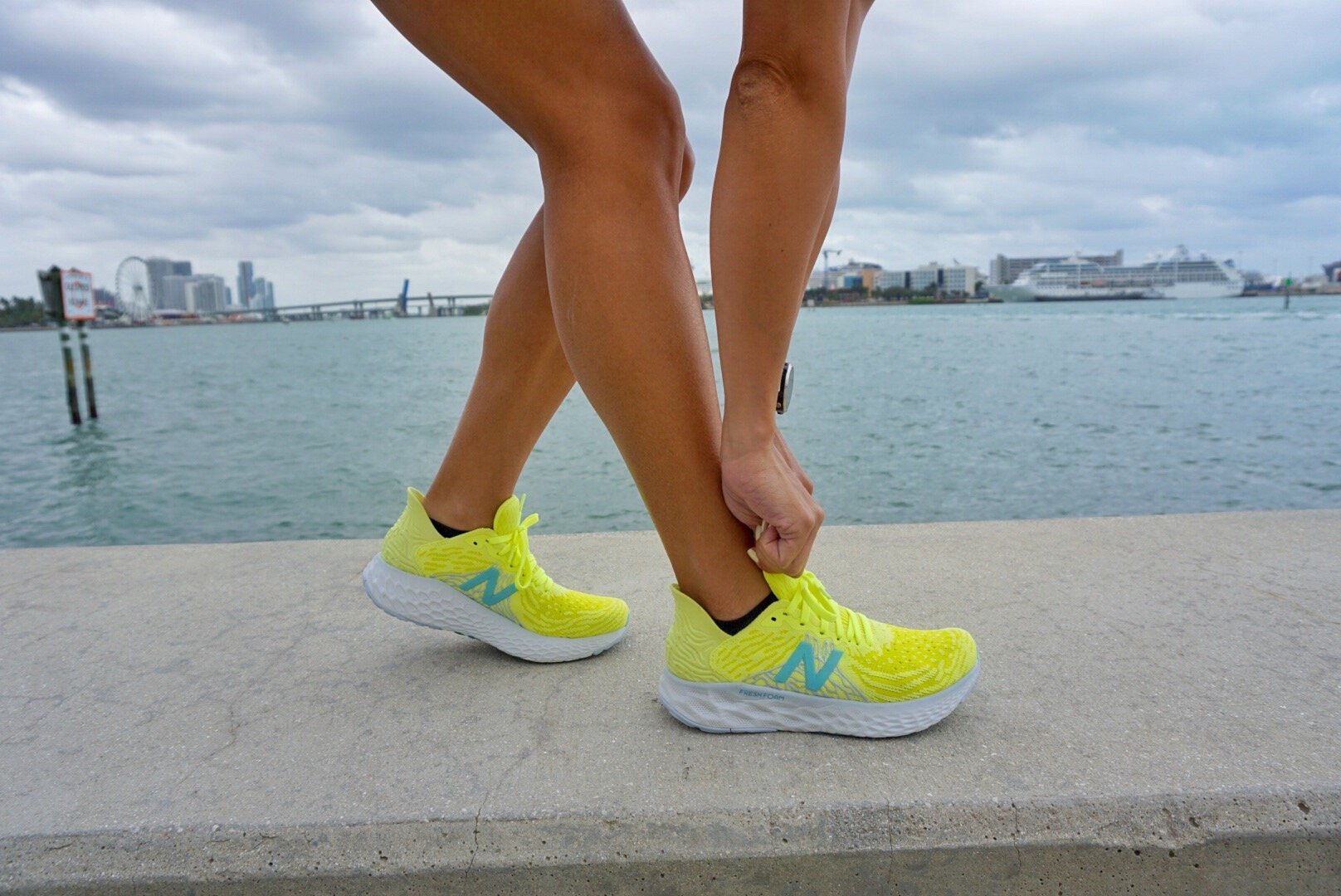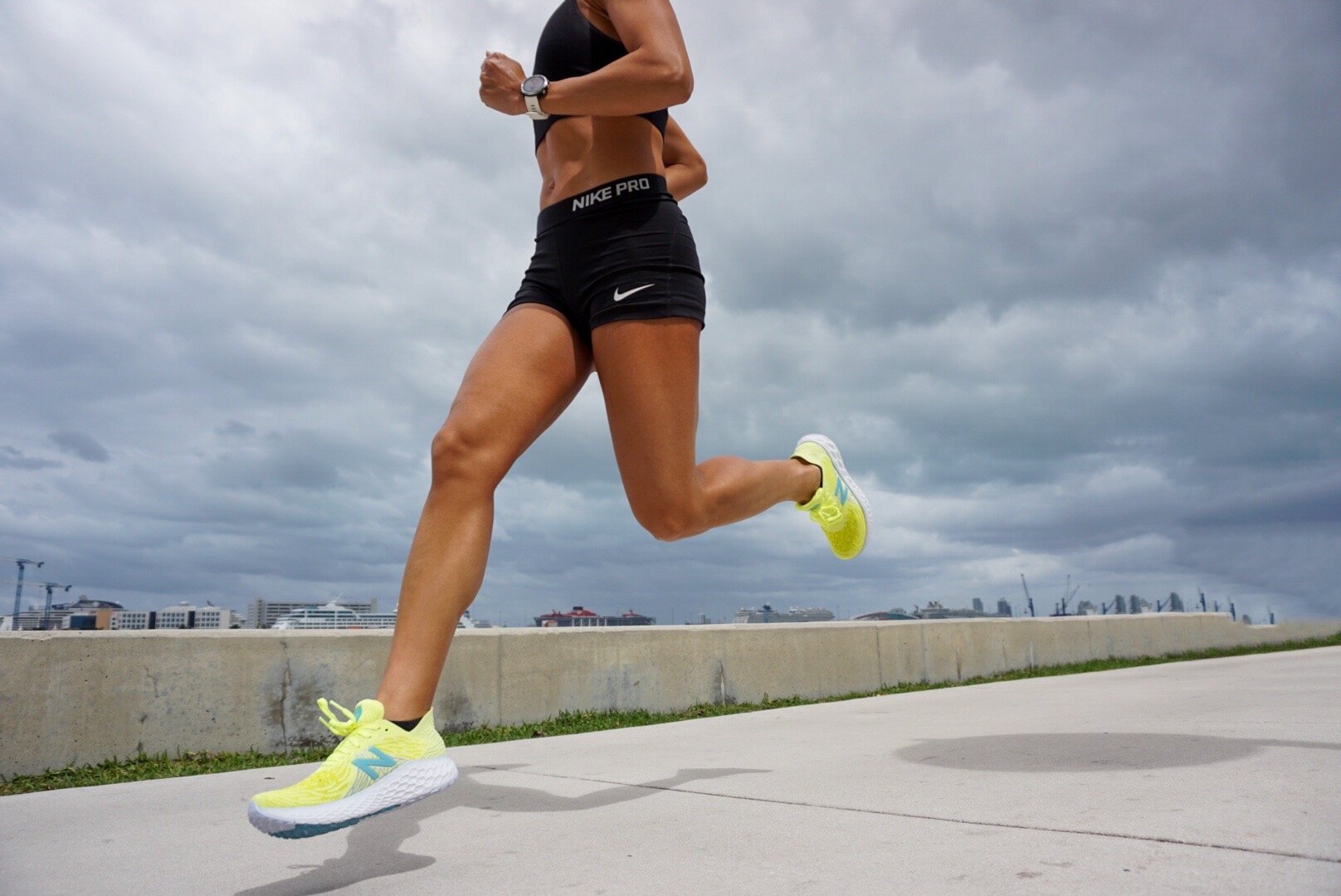Getting faster and lasting longer is every runner’s goal. If you are looking to improve your half or full marathon finish time, weekly speed sessions should be a priority. Keep reading to learn why fast workouts should be a part of your training plan, along with a few sample sessions to start incorporating into your routine.
Read morePeriodization Training is Smarter Training
When researching for marathon training plans, you have probably come across the term “periodization”. Basically, the idea behind this training approach is breaking up a training cycle into blocks of about four to eight weeks in length that serve different purposes. It is tough to work on achieving all goals to be marathon-ready all at once, so periodization training has a focus on working on one or two goals at a time. This is most definitely a more realistic training plan for someone who either has limited time to begin with or has several months before their next race. Even elite and professional runners train this way year round. It not only keeps us sane and less stressed working on one thing at a time but also decreases the risk of injuries and burnout.
Periodization Phases
Base
The first phase of periodization training focuses on building endurance, which is the foundation of any long distance running. This is the phase that builds up mileage using gradually increasing easy runs with only a few short speedier runs mixed throughout. The speed work during the base phase should include of 10 to 20 sets of 20 to 30-second strides at the end of a few easy runs each week. Strides are useful for working on proper running form and to prepare the body for faster running. Each set should be a gradual pick-up in speed to a controlled fast pace while working on increasing your stride length. Performing strides on grass decreases the impact on the body.
Another addition of speed work during the second half of the base phase is the inclusion of mini tempo runs. Pick one easy run per week to include 15 minutes of running at around half marathon pace. This will begin introducing faster paced running so that the next phase of your training cycle will not be too shocking. Weekly long runs are the cornerstone of phase one and should always be done at conversational pace and build up to about 15 to 16 miles in length. Two to three days per week of weight training should also be included in this phase to build strength in important muscle groups such as the legs and core. Since the base phase is the easiest on the body, it can be anywhere from four to eight or more weeks in length.
Strength
The second phase of periodization training focuses on building strength and speed with the inclusion of more specific speed workouts and hill sessions while maintaining mileage and weight training. In this phase, two easy runs per week will turn into two different speed sessions. The first speed session should be an increasing tempo run. Start with 15 minutes of your run at half marathon pace or slightly faster the first week and increase by 5 to 10 minutes each week until you are running 60 minutes at tempo pace. These workouts will help build strength in connective tissue and build muscle endurance to be able to get comfortable with running at your goal pace.
The second speed session can be alternated between shorter, faster repeats and hill workouts. Running on a track works best, but any uninterrupted road will do. After warming up for two to three miles, run intervals such as 4 to 8 repeats of between 1000 to 1600 meters at 5k to 10k race pace with short recovery periods of 1 to 2 minutes in between. Cool down for one or two miles. Every other week can include hill repeats of both uphill and downhill running at half marathon pace. Begin with four sets and build to eight to ten repeats by the end of the phase. Hill workouts are an excellent lower impact way to build strength and speed. Phase two will last about eight weeks in length.
Peak
The peak phase of periodization training is basically where your highest mileage and hardest workouts land. This is where you build confidence and tax your body the most while continuing to build fitness. With proper periodization, you should feel comfortable running at your goal pace for several miles during peak month. Continue with two speed workouts each week—one longer tempo run and shorter, faster repeats. Your track session will include double the repeats you were doing in the strength phase with distances ranging from 200 to 800 meters at 5k pace with one or two recovery minutes in between, for example. Form drills and strides should not be neglected during this phase, as it is a time to practice maintaining proper mechanics when fatigued.
Following the peak phase is two weeks of tapering right before your race. After this tough month of your hardest training, your body will beg for the taper weeks. Many runners usually dread these couple of weeks before a race because they feel they are losing fitness with the scaling back of volume and intensity. With proper phasing in training, you can push your limits during the peak phase and enjoy your taper, as you should. It is a time to let your body recover and focus on good nutrition and sleep to gather energy for race day. Periodization is a useful method to plan your training as it helps to gradually adjust your body to higher intensity and faster paces with a lower risk of overtraining or injuries. You are less likely to experience any setbacks during training using these cycles.
Sources
Trent Stellingwerff, Case Study: Nutrition and Training Periodization in Three Elite Marathon Runners, Journal, July 22, 2020.
Apparel Review: Brooks Dare Run Bras
Sponsored by Zappos. All opinions are my own.
When it comes to running, all details matter. We spend so much time researching and looking for the right shoes for the sport, but forget that the rest of what we wear makes an impact on our performance as well. When I first started out as a runner, I dressed in whatever I normally wore to the gym—spandex leggings and cotton tops was typical. I dealt with my fair share of chafing all over the place, but it took me a while to understand that it wasn’t just the act of running that was causing this issue, it was actually the material and types of clothes I was wearing on every single run. Cotton definitely should not be a part of any running apparel!
Most people who follow my journey will notice I have been wearing the same style of sports bras for years. I tend to stick to what I know and what has ‘somewhat’ worked for me, but end up missing out on the new and better options that come out on the market. I was lucky to try out one of the styles from Brooks new Dare Run Bra collection from Zappos, where you can find the entire line plus a long list of so many other products. Being a Zappos Rewards member means I get free expedited shipping (one business day!), free returns for a year, and the best customer service. It doesn’t get any better than what Zappos offers!
Backed by Research
When designing the Dare collection, Brooks partnered up with research teams and runners to test sports bra features on the many cups sizes, not just the standard size as most brands do. The conclusion was that bras made for running should be designed very differently than the regular sports bras out there. Running is a high impact sport and requires extra support to withstand constant and intense movement, as well as extra protection against excessive moisture. Promoting breast health was a top priority for the Brooks team when creating the Dare collection.
The Test
My first impression of the Brooks Dare High Neck Run Bra was how lightweight the material felt. I chose to try this cropped style since it had a bit more coverage than most other bras, which tends to be more comfortable to wear for my body type. I was a little skeptical to run with a bra that was almost entirely seamless, like this one, since it felt as if it wouldn’t support and hold things in place as much. My first in-motion impression of the High Neck Run Bra was the compete opposite—the lack of seams made the bra feel even more lightweight than I thought and since the material was pretty compressive, it felt just as supportive, if not more, than the bras I normally wear.
As I mentioned, I’ve had a long history with chafing from sports bras. I don’t know if it’s because my skin is super sensitive or I really just don’t wear the right type of bras for distance running! The worst of it happens during long runs and racing since it’s when I’m sweating the most. I finished the 2018 Boston Marathon, which was a torrential downpour the entire time with an almost-down-to-the bone, quarter dollar-sized open wound along the seam of my bra. It was the worst pain for days and I still have a scar from it! I normally get chafing even on 90-minute runs, but I ran a 12-miler with the Brooks Run Bra and I finished with ZERO chafing! That definitely marks a big checkmark for a good sports bra in my book!
The back and sides of the High Neck Run Bra has tiny holes, or perforations as it’s called in the details, that I thought was just for added design, but they actually serve a purpose. They are placed strategically to promote airflow so that your skin can stay dry—another aide to the anti-chafing benefits. During my runs I think this helped the bra move with my skin much better than if excess sweat got in the way and made the material stick. Many bras these days are made with cup inserts to add that extra padding and/or support for bigger cup sizes, but they tend to get tangled when you wash or just fall right out. The padding in this Brooks Run Bra has a unicup design, so it doesn’t shift around during runs and definitely made a noticeable difference for me as far as comfort.
Overall my opinion is Brooks did an amazing job paying attention to the details that matter for women runners. For me, the most important details I look for are anti-chafing properties, compression, and style, and the High Neck Run Bra fit all. The rest of the collection is designed just like this style, so I am looking forward to adding the others to my wardrobe! Combined with the perfectly comfortable Greenlight Tights and Glycerin 18, I felt unstoppable! Brooks running gear is made with detail and performance in mind and can all be found at Zappos. Don’t forget to sign up for the Rewards program to reap the many benefits and always top-notch shopping experience!
Shoe Review: New Balance Fresh Foam 1080v10
Sponsored by Zappos. All opinions are my own.
Looking for a sleek-looking, ultra-cushioned running shoe that feels light enough for fast running? The New Balance Fresh Foam 1080v10 falls within this category. Throughout my review of almost every brand of running shoes, I have found that many are trying their hardest to create and market an all-around shoe—one that’s good for any type of run. As ideal as this sounds, it’s not that easy to do. Shoes designed for speed work should be light and made with materials that respond quickly to our foot strike, which means they are not meant to last very long. Styles made for long runs or even every day running are made with heavier material that cushions the foot well. These will last longer and feel more comfortable in general, but will definitely feel bulky during speed work and limit fast paces.
My first impression of the Fresh Foam 1080v10 was how energetic the color options were. There is no better way to get into the running mood than to slip on a pair of bright-colored kicks! Zappos offers so many great colors for this style, but I chose the Lemon Slush, since it was the brightest. As a Rewards Member, you get free returns for 365 days, so if you aren’t satisfied or want a different color once your shoes arrive, you don’t have to pay to send them back! I’ve been a member for a while now and truly feel that Zappos provides the best and most knowledgeable customer service on top of super fast (and free!) shipping.
Comfort on a Different Level
By ‘different’ I mean not just cushioned and light. The New Balance Fresh Foam 1080v10 literally feels like a sock—hugs your feet and stays put with soft materials. Unlike some lightweight running shoes that are made of plastics and rubber, the 1080v10 is made of Fresh Foam X in the midsole. This is an improvement from the previous version of the shoe, which was still plush, but this time the creators made an even softer update. To add to the comfort level, this shoe truly locks into place. I felt it mostly in the heel, which I personally usually have issues where it’s difficult to get my shoes to tighten enough to cup my heel securely. I read about this heel-lock fit before trying the shoes, so I anticipated it, but it did actually feel ultra-secured in place.
The upper of the Fresh Foam 1080v10 has a bootie construction, which feels like a soft, light compression around the top of the foot. By no means is this compression tight or uncomfortable, but instead the opposite—flexible during all motions of my foot during runs. I tend to get mild swelling in my feet after hour+ long runs, which causes my shoe laces to get loose, while the actual upper of the shoe feels tight during the second half of the workout. After trying the 1080v10 for a 15-mile long run, 10-mile tempo and hill workout, and 60 minute easy run, I found that although my feet still swelled, the shoe did not feel tight and the laces did not loosen up at all. This was a result of the flexible Hypoknit upper material.
Put Speed to the Test
The New Balance Fresh Foam 1080v10 were made for a comfortable ride, but feel like a speed shoe with the new updates. I was fortunate enough to try the previous version, so am able to compare. The 1080v9 were definitely made for comfort—very well cushioned and supportive. These were one of my main go-to pairs for easy runs and medium long runs at easy pace. This newest version is definitely an upgrade and I would consider these a great option for tempo runs and maybe even track sessions, although I haven’t tried them for runs faster than my marathon goal pace.
The weight dropped significantly between the two—by a whopping 1.5 ounces. The 8.4 ounce (women’s) 1080v10 is made with less rubber and more of the lightweight Hypoknit material. Combined with the new Fresh Foam X, which gives the shoe more rebound with every step, this updated version of the 1080 is definitely made for fast running. So far, on two different tempo runs I truly felt much lighter on my feet with less fatigue when I was finished, compared to when I ran with its predecessor. I was switching around between a couple of other pairs for my speed sessions, but I’m happy I was able to try out the New Balance 1080v10—my new favorites for fast training runs!
VO2 Max: The What, Why, and How of the Misunderstood Fitness Score
When you are eager to enhance your training, skimming through online articles is the easiest way to get the most updated information for training plans, proper nutrition, and methods for coping with injuries. Once you start your research, you will not go too long without coming across the term “VO2 max”. There are several running-related terms that are learned that may seem foreign to us initially, but are pretty straight forward once explained. VO2 max is most definitely not one of them. It is a widely popular term used to measure how fit you are aerobically and most coaches and experienced runners will emphasize its importance. You may soon find yourself ecstatic when you see your VO2 max increase as per your Garmin watch, but not have a clue as to what it means.
What is VO2 Max?
Specifically, VO2 max is the maximum rate of oxygen consumption measured during exercise of increasing intensity. It is measured in milliliters of oxygen used per kilogram of bodyweight. At first it may be simple to understand just by reading its definition, but when trying to apply the term to your running routine or fitness, it all gets a bit foggy. Basically it is the amount of oxygen we can use during intense exercise. In general you want to be able to utilize the most oxygen you can during any workout, because oxygen is what allows you to continue exercising at a higher intensity level, such as while running a marathon at your goal pace.
With proper and consistent training, VO2 max should increase. Good training practices improve several physiological factors that play a role in the oxygen transport throughout the body. Stroke volume of the heart increases, which means more blood is pumped out with each heart beat, as is the size of mitochondria and capillaries, which are the transporters of the oxygen throughout the body and to the working muscles. These improvements in oxygenation in the body lead to increases in the VO2 max value. Essentially, if you are looking to get faster and last longer during running, your goal should be to improve these physiological mechanisms.
What is a Normal Value?
A typical value for a sedentary adult ranges from 25 to 35 ml/kg/min, between 35 to 55 ml/kg/min for an active adult, and over 60 ml/kg/min for an elite athlete. All of these values can vary from workout to workout depending on the intensity of the training run. If you are trying out a harder than usual speed session, you may see your value drop, but as you continue performing that training run, it will eventually assist in increasing your VO2 max. Usually long distance runners such as marathoners will have a lower VO2 max than short distance runners. This is because the VO2 max testing, as well as the training to improve it, is done at a distance and speed that is much closer to a 5K intensity.
Improving VO2 Max
Beginner runners have it the easiest when it comes to improving their VO2 max, since simply logging more miles on a consistent basis will naturally raise their oxygen consumption ability. For more advanced runners, the process will require including speed work to your training plan. The key is to reach 95% of your VO2 max level for intervals of 2 to 6 minutes. Aiming for 4 to 8 intervals of 400 meters to 1200 meters works best, with a walk or jog recovery in between each. Faster runners can even use mile repeats, but anything more than 6-minute intervals will require too much time for recovery. Your VO2 max level is considered to be your threshold pace so it should feel significantly hard.
A Good Indicator of Health
Studies have shown that higher VO2 max values are favorable if you are looking for overall health benefits. It is a true indicator of fitness, which is solely based on cardiovascular functioning, versus physical looks—what most people will believe “being fit” consists of. Several research studies indicate that individuals with a higher VO2 max generally have lower blood pressure, less risk of stroke, obesity, cardiovascular and pulmonary disease, and a longer life span. Of course, this all has to do with the fact that those who have a higher VO2 max partake in the required physical activity needed in order to reap overall health benefits.
It is beneficial to not base the entirety of your fitness gains on what your VO2 max value is, since it can be affected by several factors such as age, genetics, gender, temperature, body size, and altitude. Males will generally have higher values than females. A person with a larger body type will also have a higher VO2 max given that their heart and lungs are larger in size. Studies have shown that oxygen is more easily transported while exercising in warmer temperatures. It is important to note that the value given on the training devices is an estimate based on the heart rate and intensity of each workout. A true value can only be calculated while performing an activity such as running on a treadmill at maximal intensity with a mask on the face that measures the actual oxygen consumption.
READY, SET, GO... Miami Marathon Training in Full Swing
Here goes another marathon training season! I am already looking forward to my next full marathon—Miami Marathon in February 2020. My 20-week cycle starts today and I am fully prepared for what these next five months will bring! I use a longer training cycle than most because I am a high mileage runner, so I like to have more time to get to 100+ mile weeks. I make sure to stick to no more than a 10% increase each week, with a few lower mileage weeks in the mix. So far, throughout the summer, I’ve kept my mileage around 65 on average, but have had a more unstructured program. I’ve basically kept most runs easy, with some hills sprints every week or so, and some tempo miles when I’ve had to use the treadmill. Now the fun part begins—STRUCTURE!
My Plan
The difference between the on and off-season for me is not only the fact that I run more in the on-season, but I also eat a little better, stay more on top of my supplements, switch up my strength training to more calisthenics and body-weight exercises, and recover a whole lot more! For the next couple of months, my running program will look a little like this:
Monday: AM: Tempo + hill repeats
PM: upper body + core workout
Tuesday: AM: Easy/recovery run
PM: Easy run
Wednesday: AM: Medium long run
PM: leg + core workout
Thursday: AM: Easy/recovery run
PM: Easy run
Friday: track workout + leg/core workout
Saturday: long run
Sunday: optional recovery run or other cross-training
I’ll increase my mileage for some of the easy runs and the long run of course. After a couple of months, my tempo and track days will get longer as well.
Nutrition
No matter the time of the year, my diet looks pretty much the same. I eat relatively healthy overall, limiting “crap” food throughout the workweek and try to stick with one “cheat meal” on the weekends. I don’t stress about having a strict diet—I actually worry I am not eating enough sometimes! The biggest difference I make during marathon training is increasing my calories...if I were to count, this would probably be around 3000 calories per day. I focus on eating high-carb and protein, and moderate fats, making sure at least 85% of what I eat on a weekly basis is “quality” foods. Here is a sample of what I generally eat in a day:
Pre-run: Either a clif bar or Maurten 160 or 320 drink (bagel with PB before long runs)
Post-run/breakfast: Smoothie with protein, cherry juice, beta alanine, beetroot powder, banana, berries, and chia seeds OR oatmeal
Lunch: Eggs & toast, sandwich with turkey or tuna, or oatmeal if I didn’t have it for breakfast
Snack/pre-workout: granola bar
Post-workout: protein shake
Dinner: lean meat/fish/chicken with veggies and rice/potatoes/pasta (usually 2 servings)
Dessert: Either cookie dough or Justin’s Peanut/Almond Butter Cups
Supplements
I am good about taking my regular vitamins throughout the year, but try to be more strict about this during training, along with some additions. My daily dose of vitamins year-round includes: vitamin C, zinc, magnesium, fish oil, calcium, and iron. During training season I add in glutamine post-workout and beta alanine twice a day, evenly spaced out. Glutamine is great for keeping the immune system healthy and recovering the body. Beta-Alanine is used to help reduce lactic acid accumulation, which means less muscle fatigue. I’ll add in a blog post soon about these supplements!
Recovery
This is my hardest part! Sleep should be a top priority if you want to run well, but it’s the biggest challenge I have. I am a light sleeper so just about any noise, movement, or light wakes me up. I also have a hard time falling asleep. I take melatonin when I remember, so that helps some, but my goal this cycle is to gradually start getting to bed earlier so I can have a little more sleeping time! I have been using the ResMed S+ sleep monitor and it has helped so much! I track my sleeping patterns, so I am able to pinpoint what is most likely causing my poor sleep. My other recovery tactics are little things I do throughout the day like rest with my legs elevated every couple of hours and use my Normatec Recovery boots one hour per day. This truly helps prevent swelling in my calves and feet and keeps my soreness to a minimum every day! They are pricey, but worth it! Here is a less expensive brand you can try.
I am hoping for a smooth ride from here until February. I will be documenting as much as I can, which will not only help so many of my readers with their plans and motivation, but it keeps me accountable as well! I will keep everyone posted if I decide to add in a race or two this Fall as part of my training. I’m thinking about joining in on the Turkey Trot fun and race my first ever 5k and maybe squeeze in a half marathon in December. We’ll see! Stay tuned.





